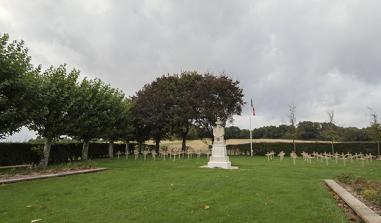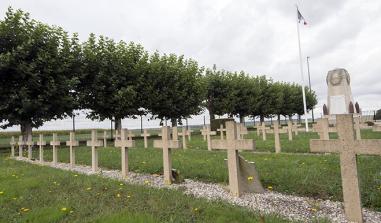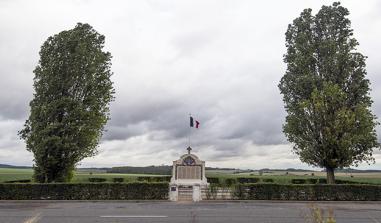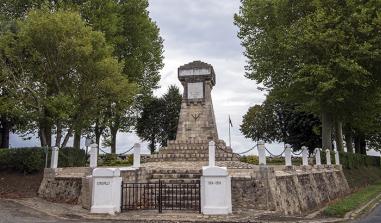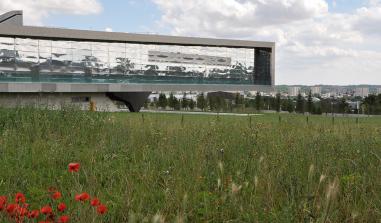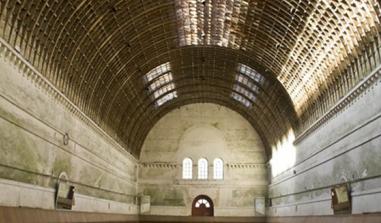Chambry National Cemetery
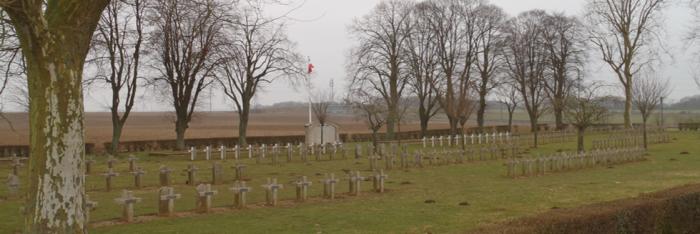
Chambry National Cemetery. Source: MINDEF/SGA/DMPA/ONACVG
Click here to view the cemetery’s information panel 
Located in the hamlet of La Pointe Fourgon, Chambry National Cemetery contains the remains of French soldiers killed in the Battle of the Ourcq, in September 1914. Established in the wake of the fighting, the cemetery was redeveloped in 1924 to hold the bodies of other soldiers killed in the battle, which were exhumed from temporary cemeteries in the area around Meaux and Coulommiers. From 1933, soldiers buried in the military burial plots of municipal cemeteries across the department were also interred here. The cemetery holds 1 334 bodies, including 364 in individual graves and 990 in four ossuaries, which is likely to include a large number of Moroccan infantrymen. There is a German military cemetery on the other side of the railway line. It was built in 1924 and comprises of 998 bodies of soldiers who fell in September 1914 around Meaux.
The Battle of the Ourcq, 5-9 September 1914
On 25 August 1914, General Joffre ordered a retreat in order to place 500 000 men in a line of resistance spanning nearly 200 miles, from Verdun to the English Channel. His objective was to cut off the Germans’ access to Paris and push them northwards. For that purpose he created the 6th Army, to defend a line from Meaux to Senlis, as there was news of enemy patrols just eight miles from Paris. In conjunction with the British, the French troops made an about-turn. The Ourcq valley then became the scene of bitter fighting, its few hills constituting crucial strategic positions.
On 25 August 1914, General Joffre ordered a retreat in order to place 500 000 men in a line of resistance spanning nearly 200 miles, from Verdun to the English Channel. His objective was to cut off the Germans’ access to Paris and push them northwards. For that purpose he created the 6th Army, to defend a line from Meaux to Senlis, as there was news of enemy patrols just eight miles from Paris. In conjunction with the British, the French troops made an about-turn. The Ourcq valley then became the scene of bitter fighting, its few hills constituting crucial strategic positions.
On 8 September, the French took a battering from the German Army. A fleet of Parisian taxis requisitioned by the French command (the “Taxis of the Marne”) enabled the front line to be maintained, in extremis, by transferring five battalions (5 to 6 000 men) there. On the 9th, the Germans, contained in Champagne, gave way on the Ourcq and, fearing being cut off from their rearguard, retreated over the Aisne, to previously fortified positions. Chambry was one of the enemy’s most advanced positions in September 1914.
From 5 to 12 September, the Battle of the Marne, and more specifically the Battle of the Ourcq, turned around what was a severely compromised military situation and halted Germany’s planned invasion of France. Paris was saved, at a cost of terrible losses: 250 000 young Frenchmen died in August and September 1914. Exhausted, the British and French armies could not find the strength to drive back the invader across its borders.
In a final thrust, each of the belligerents made a frantic dash for the sea, in order to take their enemy from behind. But it failed, and both sides were stranded on the North Sea coast. So began a conflict in the trenches that was to last four years, until the Allied victory in November 1918.
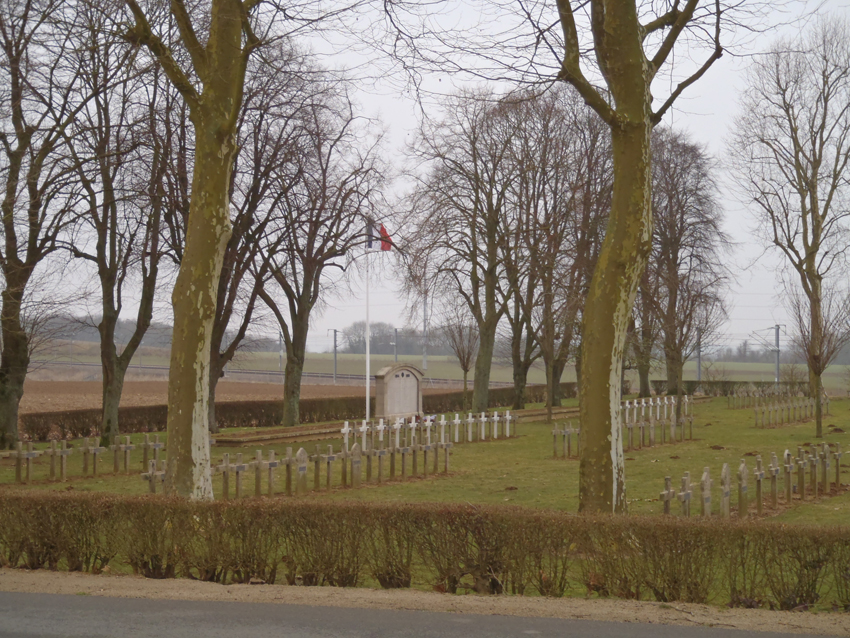
Chambry National Cemetery. Source: MINDEF/SGA/DMPA/ONACVG
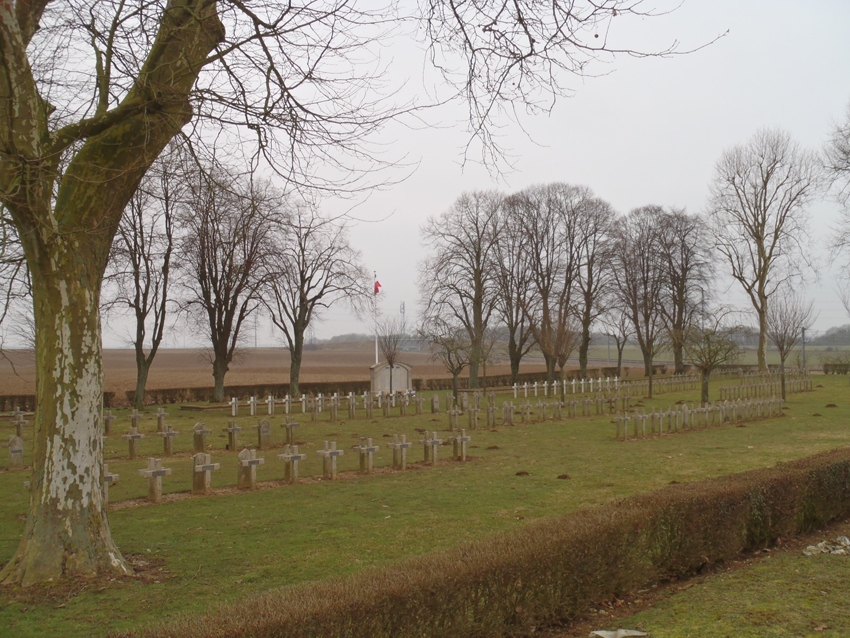
Chambry National Cemetery. Source: MINDEF/SGA/DMPA/ONACVG
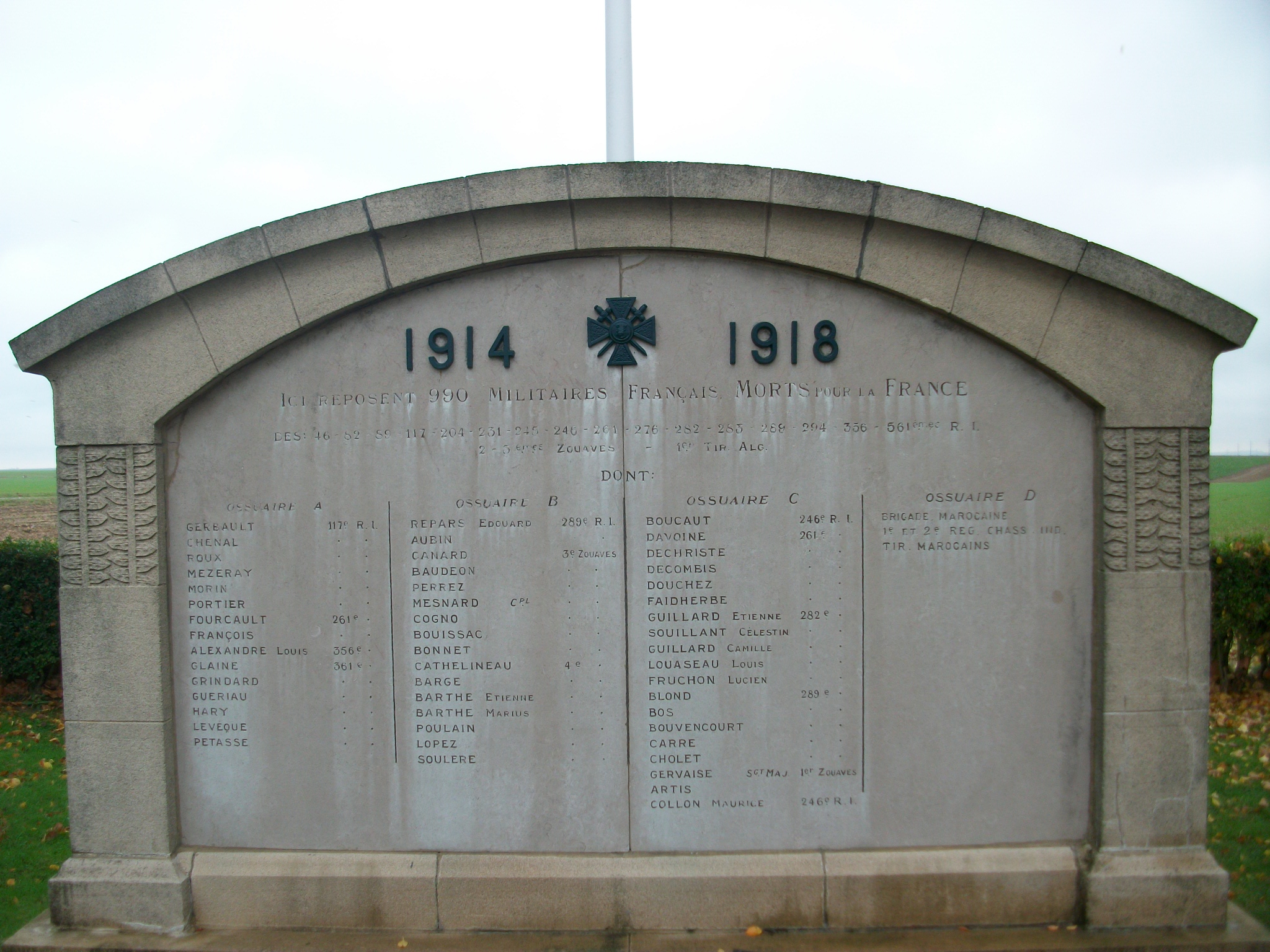
Chambry National Cemetery. Source: MINDEF/SGA/DMPA/ONACVG
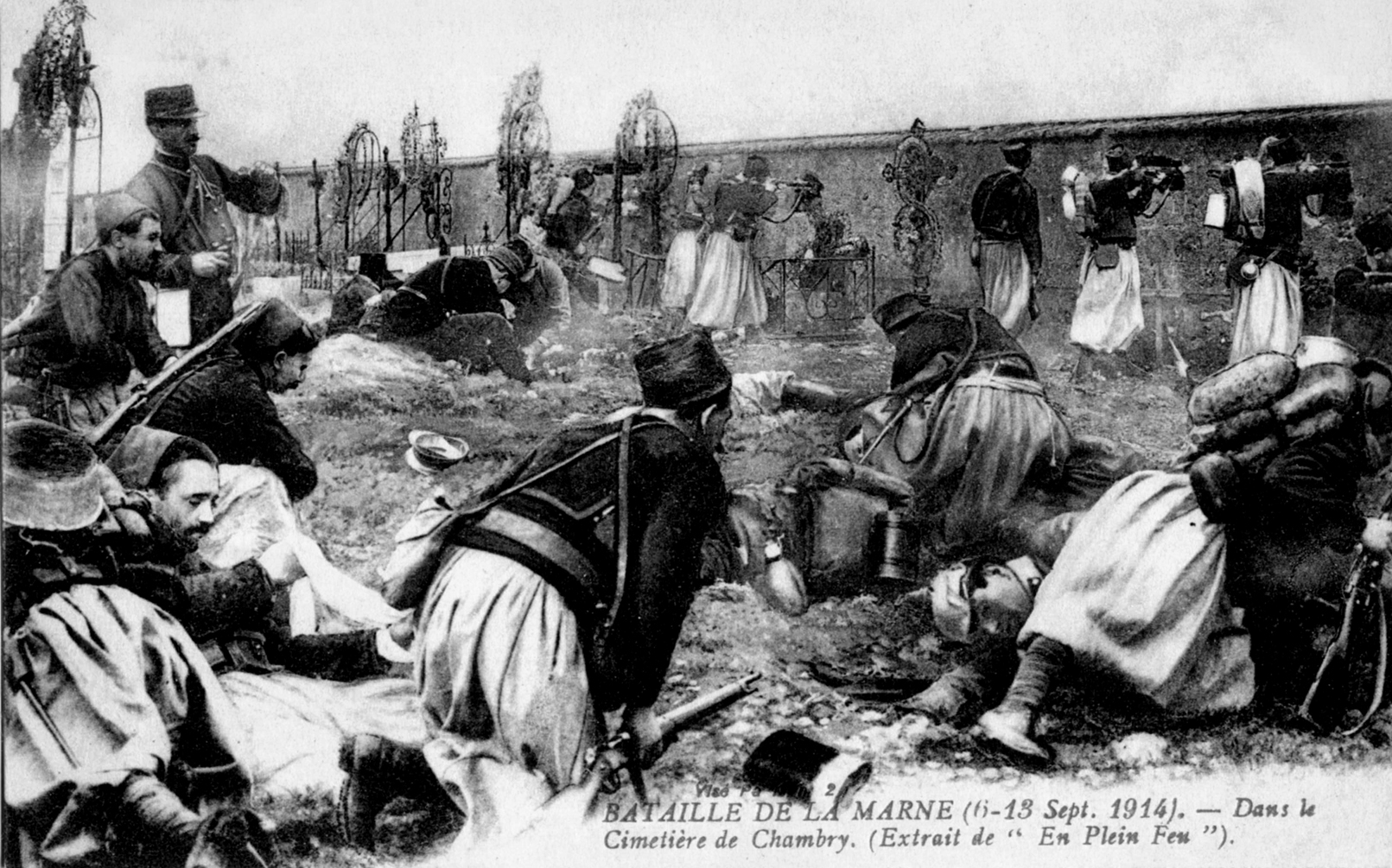
Fighting in Chambry cemetery. The furthest point of the German advance, Chambry was one of the most keenly disputed strategic positions. Riflemen of the 1st and 2nd Regiment of Indigenous Chasseurs of the Moroccan Brigade in a defensive position in the municipal cemetery. Loopholes (still visible today) were made in the wall to drive back the German attacks. Source: Musée de la Grande Guerre du Pays de Meaux
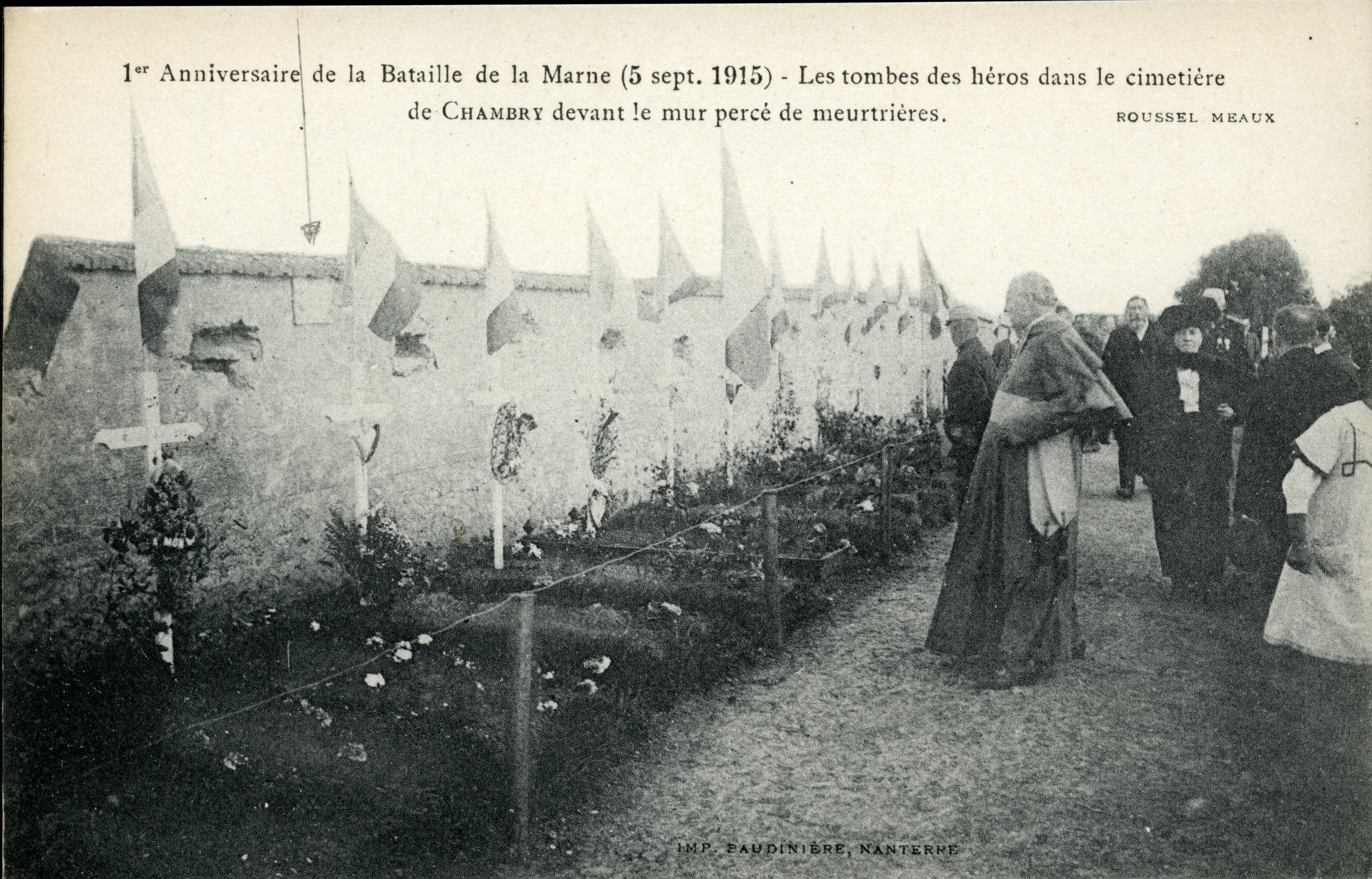
Ceremony marking the first anniversary of the fighting at Chambry. In September 1915, the French State held large-scale ceremonies to honour the French soldiers killed in this area and, more broadly, the sacrifices of the French Army, whose impetus contributed to the military success of the Battle of the Marne. Source: Musée de la Grande Guerre du Pays de Meaux
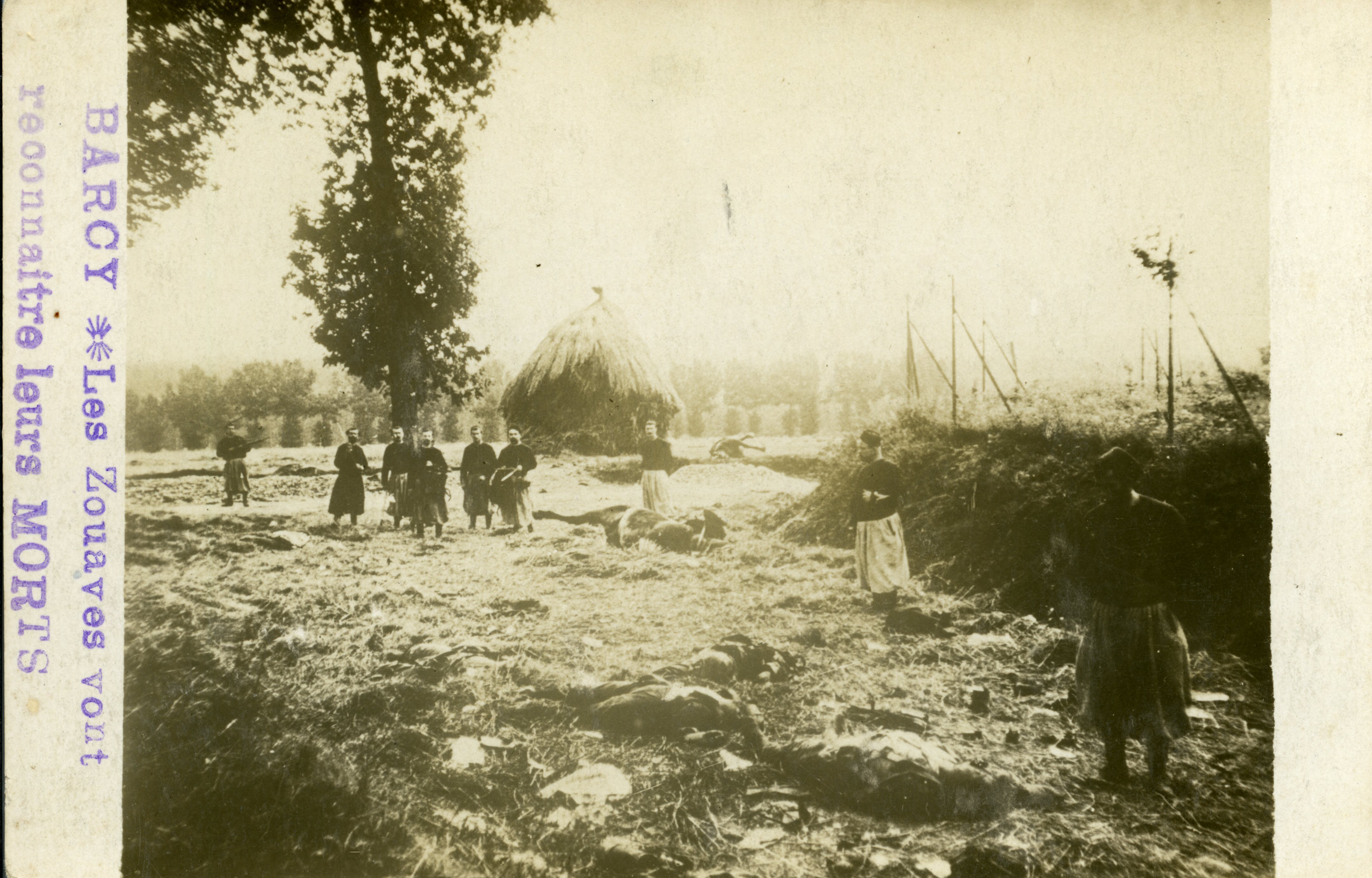
Zouaves remember their comrades killed at Barcy. Source: Musée de la Grande Guerre du Pays de Meaux
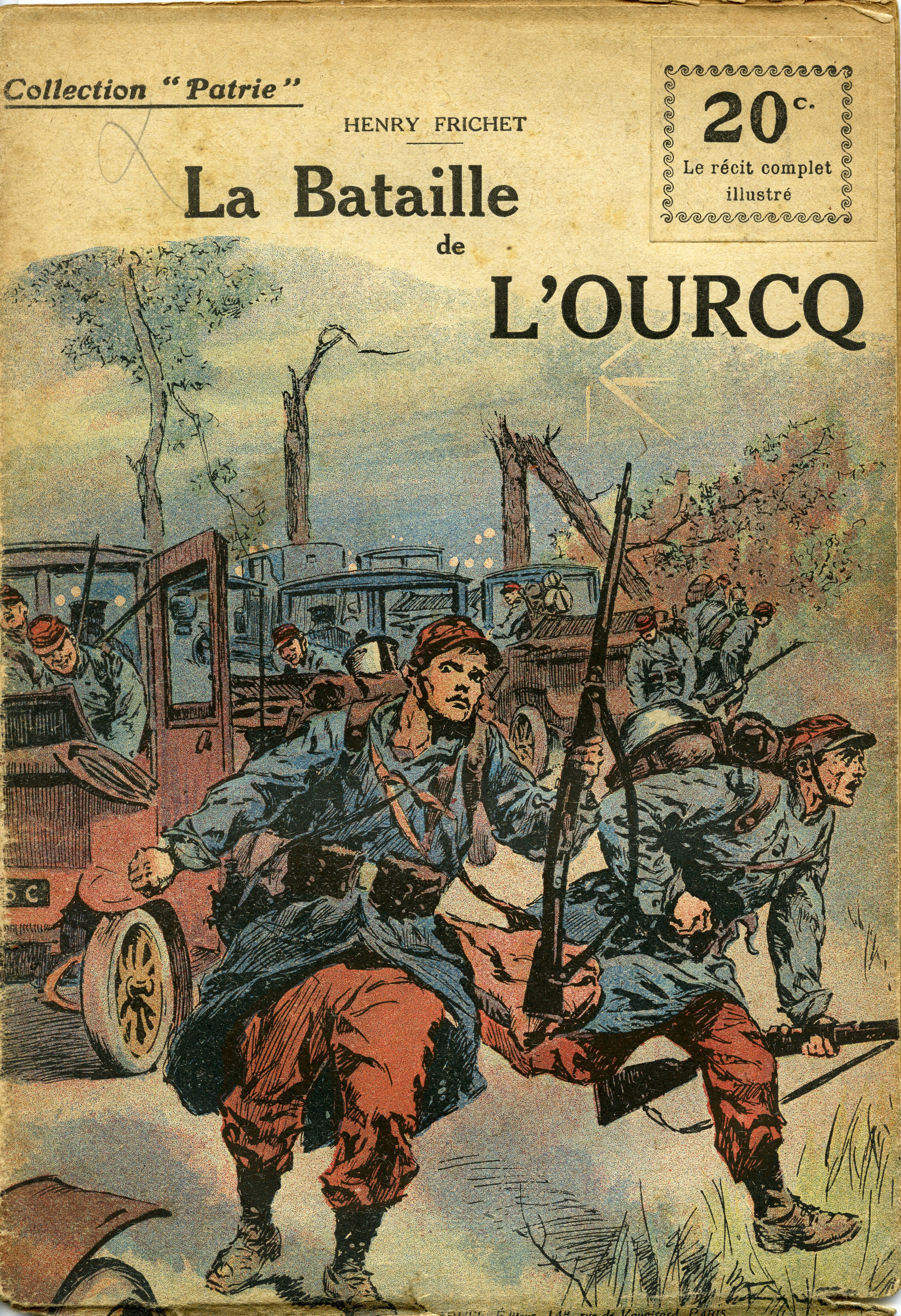
Cover of the booklet on the Battle of the Ourcq in the Patrie collection. On 9 September 1914, having reached Lizy-sur-Ourcq, at the confluence of the Marne and the Ourcq, the French infantry pursued the German troops, who fell back to Soissons and abandoned Seine-et-Marne once and for all. Source: Musée de la Grande Guerre du Pays de Meaux
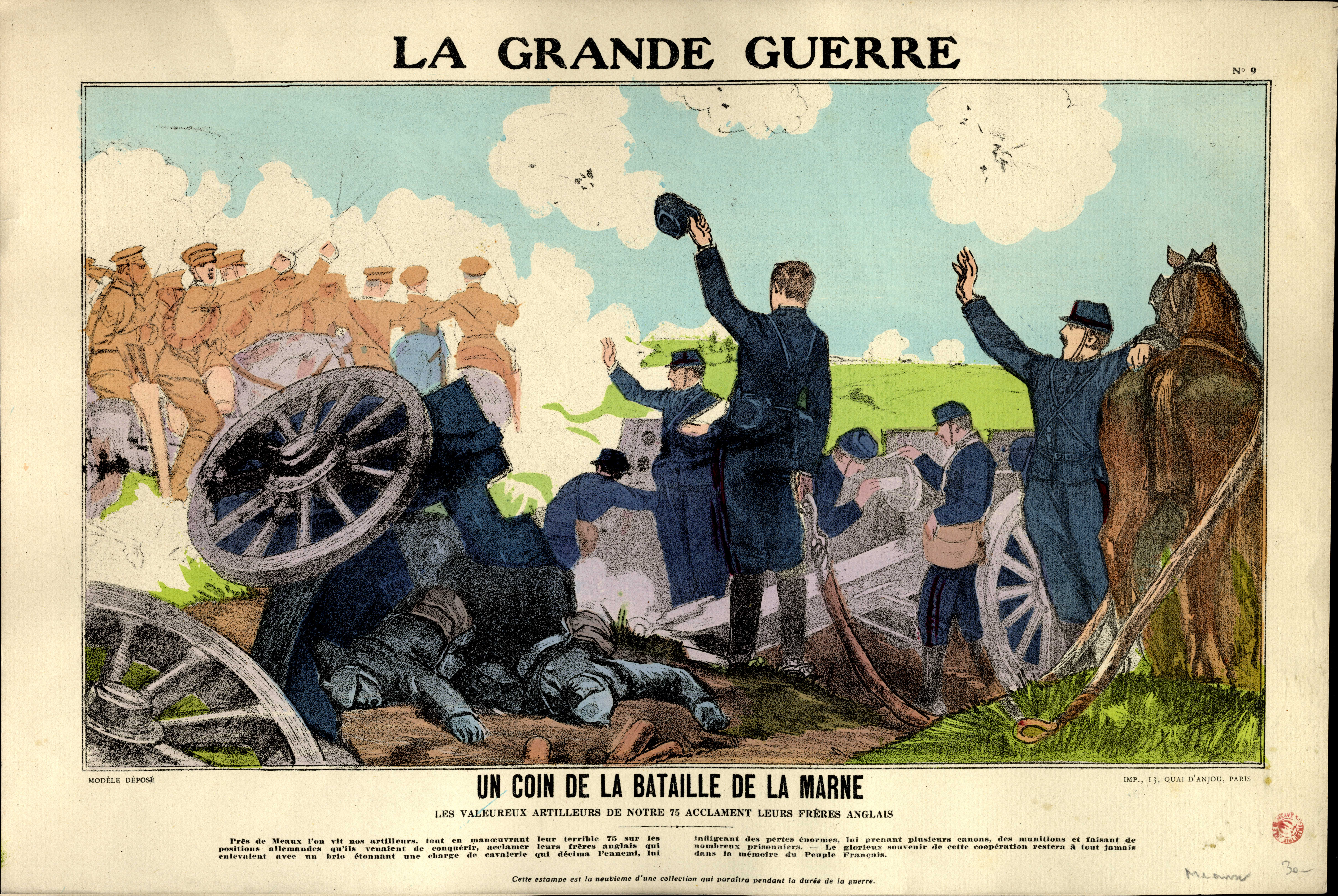
Print celebrating the British involvement alongside the French. On 9 September 1914, British troops, supported by their cavalry, once more crossed the Marne on the right flank of the French 6th Army (between Luzancy and Nogent-l’Artaud) and rushed the German line, threatening to cut it in two. Source: Musée de la Grande Guerre du Pays de Meaux
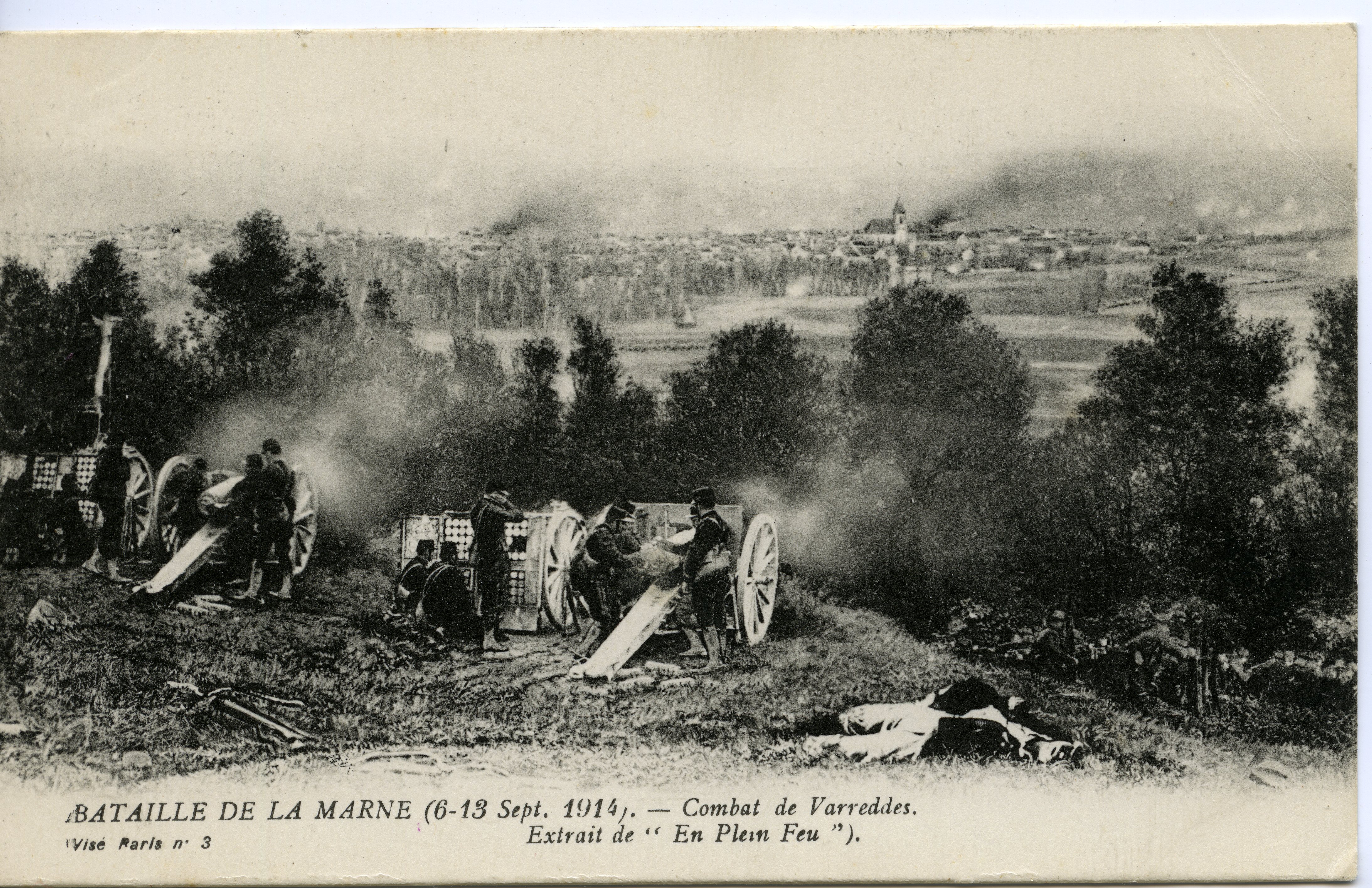
Battery of 75 mm guns in position in the hills above the village of Varredes. On 8 and 9 September 1914, the French artillery pounded the village of Varredes (between Chambry and Étrépilly) in an attempt to halt the advance of the German troops and drive them back over the Marne. Source: Musée de la Grande Guerre du Pays de Meaux
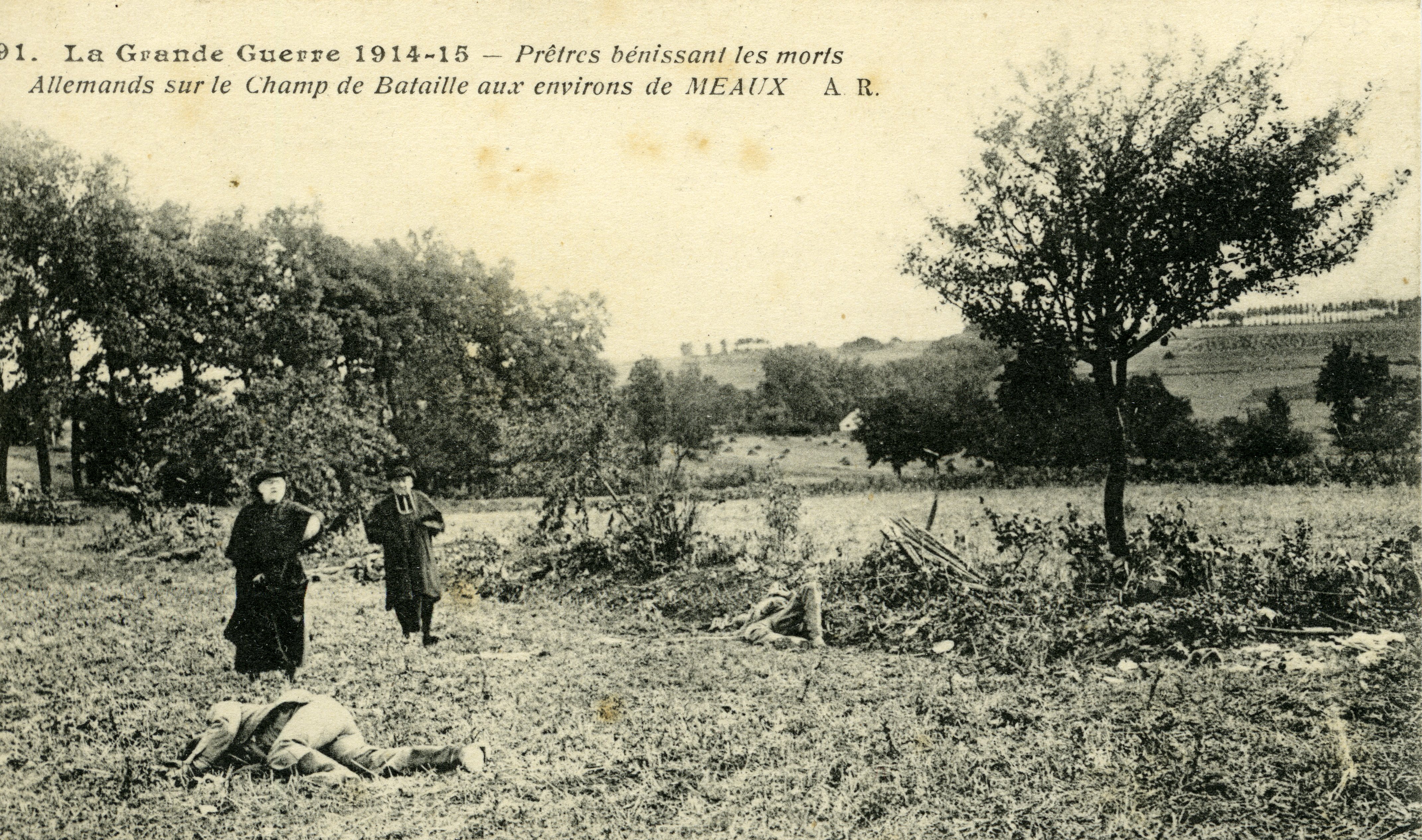
The bodies of German soldiers killed in the Battle of the Ourcq are blessed. Despite losses as heavy as the French, the German cemetery contains fewer bodies, because the enemy soldiers’ remains were incinerated after the fighting. Source: Musée de la Grande Guerre du Pays de Meaux
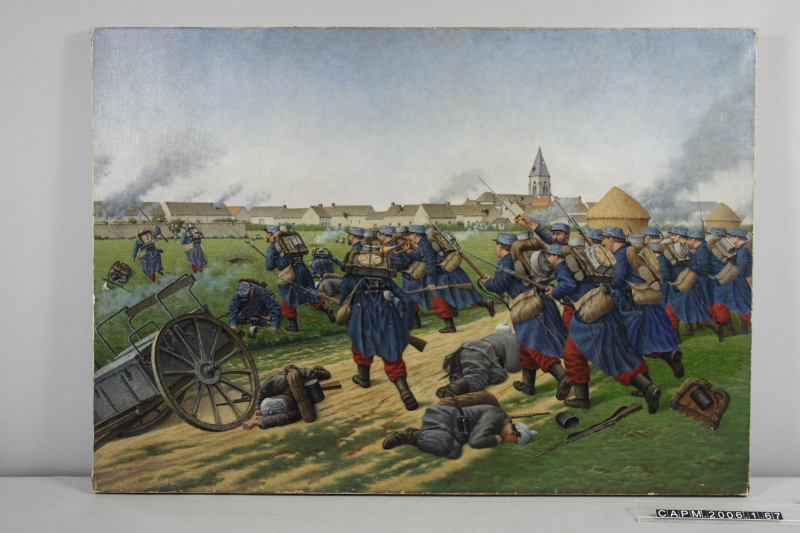
French attack on the village of Étrépilly. The French soldiers, sitting targets for the enemy in their bright red trousers and blue coats, carry out a bayonet charge across open country, against German positions on higher ground. This attempt to recapture the village of Étrépilly (6-7 September 1914) failed. Source: Musée de la Grande Guerre du Pays de Meaux
Practical information
Chambry
Unguided visits throughout the year
Read more
Read more
Seine-et-Marne Departmental Tourist Board
11, rue Royale - 77300 Fontainebleau
Tél : +33 (0)1 60 39 60 39


